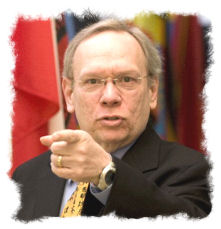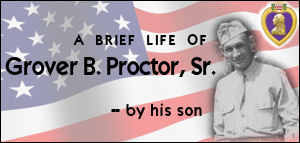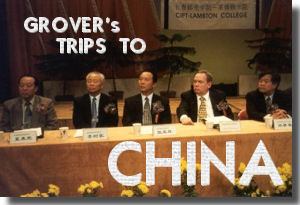|
Part One of this analysis of the House Assassination Committee's Final Report examined the history of and controversy surrounding the creation of the Committee. It also detailed two of the areas of the Committee's focus, the Bronson Film, which seems to show two individuals in the "lone nut's assassin's lair," and the dictabelt acoustical evidence of the shooting, which experts said proved the existence of a second shooter. Both of these, of course, contradict the idea of a lone gunman. Part Two below examines what the Assassinations Committee discovered about (and how they dropped the ball concerning) the background and connections of both Lee Oswald and Jack Ruby.
Since November of 1963, we have been told that both Lee Harvey Oswald and Jack Ruby were lone assassins. The official story said that neither man knew the other, and that neither had co-conspirators in his crime. The cult of the "lone nut" became the government's official religion.
If this were true, then how very strange we find that both men moved in circles that were, at best, mysterious and, at worst, nefarious; that these circles, while at times concentric, often overlapped in strange ways and at the most unexpected places; and that both men seemed to be caught up in something larger than themselves which would eventually lead them to Dallas in 1963. It is these men's lives, their associates and their motives that will be examined here.
Most Americans find it hard to imagine all of the "underworld" that exists in this country. That term doesn't mean just Organized Crime, but all of the shady, clandestine, secretive groups and individuals that move unseen through the national fabric. The place to begin looking for the roots of Oswald and Ruby, and of Dallas 1963, is in this underworld as it existed then.
Though it stopped short of pursuing any lead or line of investigation to its ultimate conclusions, the House Assassinations Committee did an invaluable service to those searching for the truth of the assassination by focusing attention on the backgrounds of the two leading characters. Pointing a vague finger toward conspiracy, the Committee did manage to find enough evidence to make them believe that none of the following groups were involved in the assassination: the Cuban or Soviet governments, anti-Castro Cuban groups, the Secret Service, the FBI and the CIA. But even the Committee saw that it was impossible to divorce Ruby from the Syndicate or Oswald from the Intelligence Community and anti-Castro Cubans.
The Unholy Alliance
If politics can be said to make strange bedfellows, then how much stranger must those be that were made in the late Fifties and early Sixties by political intrigue, sabotage and assassination. Some 20 years afterwards, we are just now beginning to understand the various alliances and hatreds that shaped American internal and foreign policy. Among those forces were those that spawned Lee Harvey Oswald and Jack Ruby.
It began in Cuba. It would end with the CIA and their allies, the anti-Castro Cuban militants, along with the Mafia and their allies, the Teamsters, all banded together with the common goal of overthrowing Fidel Castro. Each had their own reasons, and none minded working with any of the others in order to accomplish the "liberation" of the island nation.
Mob leader Meyer Lansky's gambling, prostitution and narcotics empire, which operated out of Cuba during the Fifties, rivaled in size and scope any such organization in the world. By arrangement with Cuban dictator Fulgencia Batista, who stashed his cut in a Zurich bank, Lansky and his mob had virtual free rein to bilk tourists of millions of dollars a year. As long as Batista was healthy and powerful, the Mafia had a gold mine.
Then came the rebel leader Fidel Castro, whose early image was that of a modern liberator, a 20th century Simon Bolivar, who would bring democracy back to Cuba. With the support of the nations of the Western Hemisphere, Castro toppled Batista from power. Once he assumed power, Castro announced that his leanings were leftward, and that his alliance was with the Communist bloc. Stunned, the American public soon realized that it had allowed the Iron Curtain to within 90 miles of its shores.
The Mafia tried to woo Castro into allowing the status quo to remain, but in the end, the new dictator jailed or deported all of the Mob's people. Lansky fled early in the conflict, but his chief lieutenant, Santos Trafficante, Jr., who stayed behind to try to negotiate, was jailed.
Robbed of the Cuban tourist trade, the Mafia vowed revenge. They became involved in anti-Castro activities through cooperation with the CIA, who had plans to assassinate the Cuban leader.
In the early days of 1960, the Eisenhower administration and the CIA were implementing plans to rid Cuba of Castro. (The administration's contact with the CIA on this was none other than Richard Nixon, whose questionable associations with reputed mobster Bebe Rebozo and financier Howard Hughes, among others, would be investigated some years later.) Acting through Howard Hughes' aide Robert Maheu, the CIA made contact with and contracted the services of Trafficante, Sam Giancana (the Chicago Mob boss) and John Roselli. Their purpose: to avenge the "business losses" suffered by the Mob and to eliminate an enemy of the U.S.
With the failure of the Bay of Pigs invasion (an ill-planned attempt of the Eisenhower administration to get anti-Castro Cubans to invade their homeland and depose Castro, with CIA help) the CIA's new Deputy Director of Plans, Richard Helms, further intensified the agency's anti-Castro vendetta. Knowing that Kennedy was staunchly opposed to Bay of Pigs types of activities, Helms withheld knowledge of these plans from the new President. AfterLyndon Johnson became President and he discovered what was really going on in the Caribbean, he declared that the U.S. was operating a "damned murder incorporated" there.
During the first three years of the decade, the four groups — the Mafia, the Teamsters, the CIA and the anti-Castro Cuban militants — forged a close-knit relationship that made it difficult at times to determine where one ended and another began. The Mafia, under Trafficante in Tampa and Carlos Marcello in New Orleans, maintained a gun-running operation, in certain cases funded by Teamster Pension Fund loans. Other such loans from the Teamsters and Jimmy Hoffa, which were being investigated by the Kennedy Justice Department, were helping the Mob recoup some of its Cuban losses through investments in Las Vegas.
The CIA would maintain snug relations with the anti-Castro militants all over the Southeast, with the help of such figures as E. Howard Hunt, Frank Sturgis and Guy Bannister. Looked on as the Cuban refugees' only friends in government, the CIA operated training bases and provided promises of a triumphant return to a liberated Cuba. Finally, the overlap was continued by the existence of such people as Marcello's henchman and pilot, David Ferrie, who bridged the gap as a CIA contract employee. As will be seen, November 22, 1963 would bring about the convergence of these four groups in large numbers.
Lee Harvey Oswald
Where do Oswald and Ruby fit into this jig-saw puzzle? The House Committee has laid the foundation that there was "probable conspiracy" in the JFK assassination. How far did this conspiracy reach? Was Oswald really the lonely, embittered leftist the Warren Commission said? Was Ruby a patriotic nightclub owner who couldn't stand to see Jackie Kennedy suffer through a public trial of Oswald? In terms of conclusions and definite answers to these questions, the House Committee failed.
Who was Lee Harvey Oswald? Though it appears that during his short adult life he tried to make himself appear a Marxist, his friendships and associations belie the point. As a 17-year-old Marine, he was selected to receive specialized training and higher-than-normal security clearance. He was stationed at the CIA-controlled Atsugi base in Japan, shortly after which he received a phony hardship discharge from the Marines. He then "defected" to Russia.
His 30-month "defection" consisted of the following: At the American embassy, he verbally renounced his American citizenship and his intention of giving military secrets to the Soviets. The Soviets, wary of Oswald, reluctantly agreed to let him stay, shipping him off to Minsk. He married, had a baby, and suddenly announced he wanted to return to America. He was lent money by the State Department for his return, and was never investigated or prosecuted for his supposed treason.
Because he announced he would give military secrets to the Russians, he should never have received another passport. But, when he applied for one to go to Mexico City, he not only got it, but received it within 24 hours, before everyone else who applied at the same time and place.
Oswald's supposed pro-communist front continued when he was filmed on television distributing pro-Castro literature. Even this, though, was not what it seemed. The remainder of Oswald's pamphlets (that is, other than the ones he threw away right after the cameras left) were found in the offices of Guy Bannister, out of which Oswald reportedly worked. Bannister's main interests, according to his files, which were confiscated by authorities shortly after his death, were in ultra-right politics and subversive activities in the Caribbean.
Others of Oswald's associates give clues to his not really being a Marxist. He was acquainted for many years with David Ferrie, who was suspected of complicity in the JFK assassination. As mentioned earlier, Ferrie was a CIA contract agent and a lieutenant to Mob boss Carlos Marcello. Just after being approached by New Orleans authorities in connection with JFK's death, Ferrie was found dead in his apartment along with a typewritten suicide note.
In Dallas, Oswald was befriended by one George DeMohrenschildt, a leader of the city's anti-communist White Russian community, who took Oswald in and treated him like a son. DeMohrenschildt, who died mysteriously just after he was approached to testify before a Congressional Committee investigating the JFK death, was suspected of being on the CIA payroll, as he just happened to end up in Nicaragua as the Bay of Pigs militants were being trained there.
The House Committee uncovered a great example of Oswald's duplicity, but failed to see its implications. Antonio Veciana was the founder and leader of the militant anti-Castro Cuban group Alpha 66. He claims that for 13 years, this CIA contact was a man who called himself Maurice Bishop, and that in August or September of 1963, he met with Bishop and a man he later recognized as Lee Harvey Oswald. Subsequent to the assassination, Bishop came to Veciana and offered to buy the testimony of two of Veciana's relatives in Mexico City that they had been the ones to meet with Oswald in Mexico City. Because of Veciana's inability to contact his relatives, the deal fell through.
The Committee investigated the incident, and found a former chief of the CIA's Western Hemisphere Division (whom it failed to identify) that bore a resemblance to a sketch of "Bishop" made by Veciana. The former officer was identified by the CIA case officer as having often used the alias Maurice Bishop. When confronted with the CIA officer, Veciana, however, refused to identify the man as Bishop, though "the Committee suspected that Veciana was lying." With all of the evidence pointing in the direction of Oswald being connected in this way with the CIA, the Committee concluded, however, that it "could not credit Veciana's story," and left it at that.
Faced with all of the evidence of Oswald's anti-communist associations, all the Committee could say was, "The Committee recognized that an association by Oswald with anti-Castro Cubans would pose problems for its evaluation of the assassin and what might have motivated him.... The Committee candidly acknowledged, for example, that it could not explain Oswald's associations with anti-Castro Cubans." Rather than accept the anti-Castro leanings at face value, and see the pro-communist activities as the front they probably were, the Committee chose to view things backwards.
Jack Ruby
The path that took Jack Ruby to the basement of the Dallas Police Department on November 24, 1963, where he killed Lee Harvey Oswald, was as interesting and indirect as Oswald's, though each came from quite different backgrounds. As a youth, Ruby was a numbers runner for Al Capone's cousin Frank Nitti. From that time on, his association with the Mob was set for life.
The newspapers first met Ruby in 1939, when the secretary-treasurer of Chicago's Waste Handlers Union was murdered. The police picked up the union's president, John Martin, for questioning along with the man who would become the new secretary-treasurer, Jack (Ruby) Rubenstein. Martin, who would be acquitted for the murder, was soon ousted as president by Paul "Red" Dorfman, who gave Jimmy Hoffa his first Teamster's entry into Chicago. His son, Allen Dorfman, would be the head of the Teamster's Central States' Pension Fund that would be investigated by the Kennedy Justice Department.
Ruby's friends after the war were such as to raise questions with authorities after his arrest, though the Warren Commission took their word that Ruby had no affiliation with the Mafia. Among those friends were Dave Yaras and Lenny Patrick, who would emerge as two of the Mob's most feared enforcers. Both Yaras and Patrick would turn up in Ruby's life after his move to Dallas in 1947, as would one Lewis J. McWillie, who worked for Lansky and Trafficante in Havana in their gambling houses. Ruby visited McWillie at least twice in Havana in 1959, during which time evidence has been uncovered that he visited with the then-jailed Trafficante.
Santos Trafficante was quoted as saying, shortly before the JFK murder, that there was no need to worry about Kennedy as he was "going to be hit." One of his closest allies in the South, New Orleans Mob boss Carlos Marcello, was so infuriated at the Kennedy brothers, he is reported to have demanded that "this stone be taken" from his shoe.
Sam Giancana and John Roselli, who worked with Trafficante on the plans to assassinate Castro in the early Sixties, were reportedly ready to tell Congressional investigators that the manpower from that venture was perhaps used in the JFK murder. Shortly thereafter, on June 19, 1975, Giancana was found murdered in his home with six gunshot wounds in this face and neck. Fourteen months later, the badly decomposed body of John Roselli was found in an oil drum off Miami.
The House Committee tended to believe that the most weighty portion of evidence seemed to point towards Organized Crime as behind the assassination, going so far as to state that both Marcello and Trafficante had motive, means and opportunity. Further investigation into Jack Ruby's background, in such excellent books as Seth Kantor's Who Was Jack Ruby?, and into Oswald's relations with the New Orleans underworld, in works like Jim Garrison's A Heritage of Stone, exposes an undeniable web of intrigue.
Buried in the middle of its Report, the House Assassinations Committee did admit this much: "The Committee's investigation of Oswald and Ruby showed a variety of relationships that may have matured into an assassination conspiracy. Neither Oswald nor Ruby turned out to be 'loners,' as they had been painted in the 1964 investigation."
But instead of asking Congress for an extended mandate to investigate the acoustical evidence, the Bronson Film, the tangled web of alliances that brought Oswald and Ruby together in Dallas, the House Committee failed to bring the American people much more of a substantial conclusion to the investigation than it already had. Its last injunction was that the Justice Department take up the investigation. Let us hope that eventually, some agency of the government will take hold of the investigation and see it to the end. The American people deserve to know the truth after all these years of deception, half-truths and ignorance.
|






